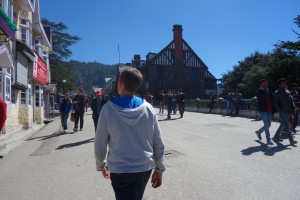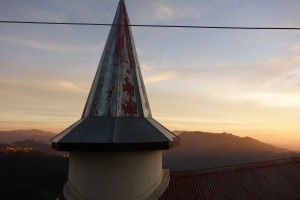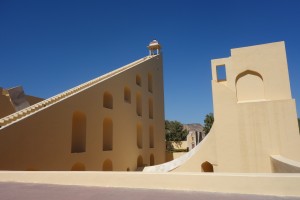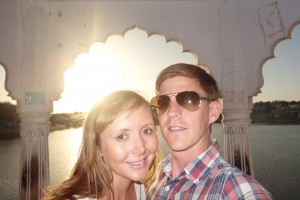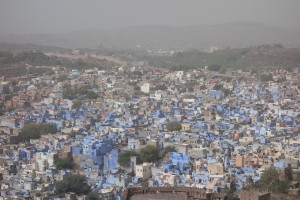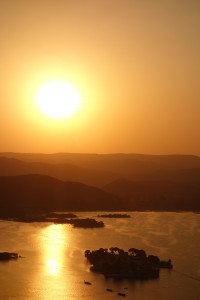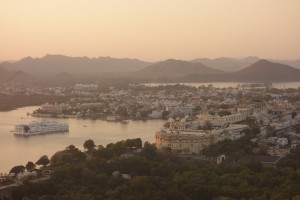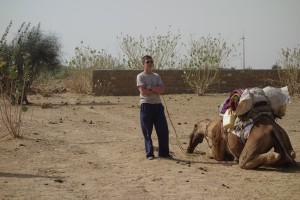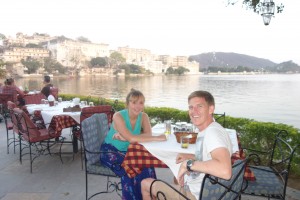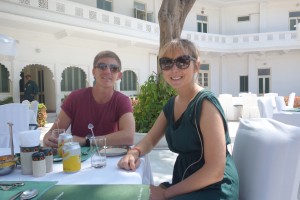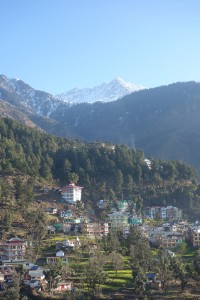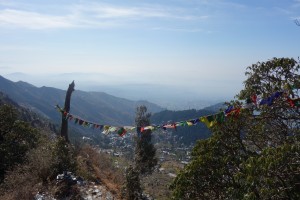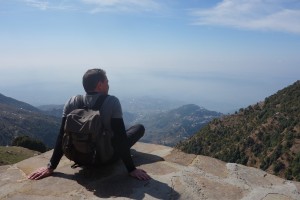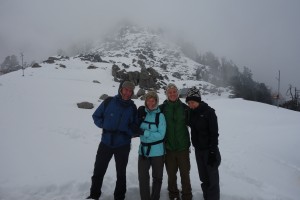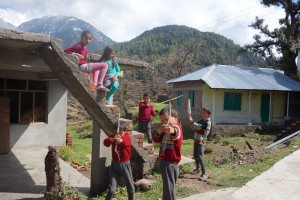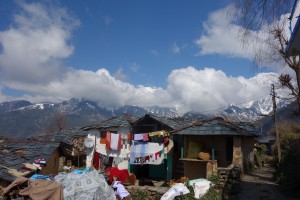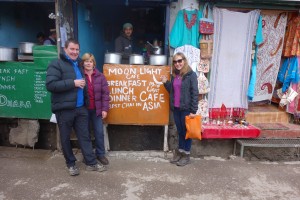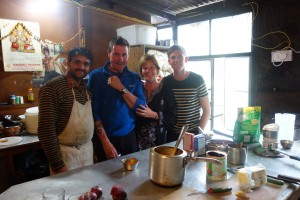We stopped off at Shimla en route to Rajasthan. As the bus wound its way toward it looked pretty similar to Mcleodganj; only upon closer inspection did we realise what a curious place it was – it appeared we were in a quaint English town, nestled in the mountains of Himachel Pradesh.
English buildings, English churches, English shops, a promenade, a giant statue of a monkey-god (that one probably wasn’t the English), even the samosas tasted a bit like Cornish pasties. It was a little unnerving. But a picturesque town, and a nice place to spend a few days before plunging back into India proper.
And so we started on our whistle-stop tour of Rajasthan, the Land of the Kings, India’s most colourful state.
Immediately we stepped off the train in Rajasthan it was like someone had cranked up the India. Cars, bikes, rickshaws, people, dogs, cows all multiplied; sound, heat, smell amplified; people haranguing and hassling at every turn, tuk-tuks stalking for custom, wiry saddhus swinging alms boxes in your face, or trying to foist flowers on you, gruesome beggar women thrusting demanding hands. The noise is deafening. You quickly become hardened, learn to shun any proffered handshakes or gifts, and ignore any shouted exhortations or salutations.
First stop was Jaipur, the capital of the state, and so loud, busy and hot that its hard to describe it as anything else. The old city, known as the Pink City (because its painted orange), is only marginally better, but the real gems are the Maharaja-built enclaves: the Jantar Matar, a collection of giant angular structures, astronomically aligned to measure the positions, azimuths and angles of the stars. The Hawa Mahal, built so the ladies of the Maharaja’s court could daintily spy on the comings-and-goings of the city and now used by the likes of us to escape it. And the Amber Fort, the pick of the bunch, a sandstone palace standing majestically atop a hill, it’s interior carved out of cool marble with traces of Islamic opulence here and there.
Pushkar next – part tourist town, part pilgrimage town. Here someone also cranked up the Hippy, walking round namaste-ing each other, carrying things on their head (just like real Indians), and just generally playing Hindu. To be fair to them you can see why: to watch the sun set over the holy lake and see the pastel buildings turn a chalky shade against the distant mountains, to the sound of bongo drums and sitars is, well, its good for the soul. We stayed in a hotel with a swimming pool – the first of this trip – so spent many hours just relaxing our socks off before heading to Jodhpur.
We liked Jodhpur. The focal point is the Marangargh Fort, rising formidable and impregnable from a sandy cliff; a jamboree of blue cuboids fall away far beneath it (giving it it’s name, the Blue City), creating twisting medieval streets that are alive with cheerfully mischievous children who would always, upon seeing us, drop what they were doing (filling water balloons, tormenting goats), straighten up and belt out a few words in English. A favourite of Amy’s was a rendition of a song that starts “Hey honey-bunny, something-something funny!”
From Jodhpur we bussed it to Jaisalmer, a city seemingly sprouted out of the desert itself with every building a sand-coloured carved-rock masterpiece. Another fort, but this one still active so people live, eat and sell tourist-tat within it’s narrow, shaded alleyways. We struck out into the surrounding desert on a 2-day Camel Safari, an unforgettable experience. There was something almost biblical about riding those ancient ungainly beasts through the desert plains. We made camp amidst some sand dunes where our guides immediately built a campfire to whip up some hearty veg curry, dal and chapati, before we slept under the myriad stars in what must be the only place in India without the sound of barking dogs.
Finally, Udaipur. The Venice of the East, and the jewel in Rajasthan’s kingly crown. The city is built around a cluster of lakes and peaks and the centre of attention is the magisterial City Palace complex. It’s slight elevation above most of Rajasthan means a refreshing breeze pervades, and the European coffee shops and cafes leaves it feeling almost Mediterranean. At night you can sit in one of the many rooftop restaurants and see the rippling reflection of the city in the lake. Incidentally, Udaipur is where they filmed Octopussy and eventually we succumbed to the luxurious allure and started drinking lunch-time G+Ts and paying to use the swimming pool in the posh hotels. Also, we took a cable car to Sunset Peak where the incredible sunset – rivaled only by that of Santorini – left us decreeing Udaipur our favourite Indian city.
Rajasthan has romanced us, well and truly. The mystical spirituality of India seeps through into the everyday, in the coloured cities, many temples, the holy choruses and the burning incense. The dusty aridity and the Islamic influence lend it an Arabian air, and the impressive forts and palaces provide welcome respite from the hectic cities. It can at times leave you cradling your head in your hands, dreaming of a place with road laws and rubbish bins, and beef. But other times it’ll lead one or the other of us to proclaim, with a deep sigh, “Ah, I love India.”

